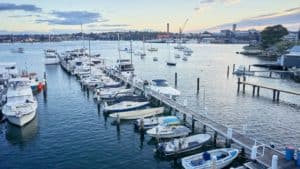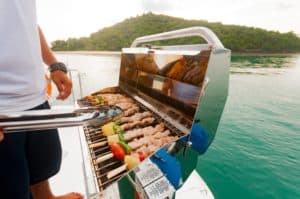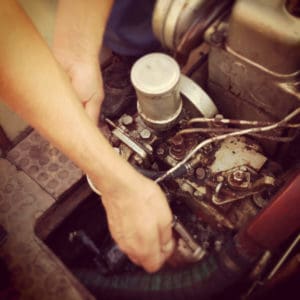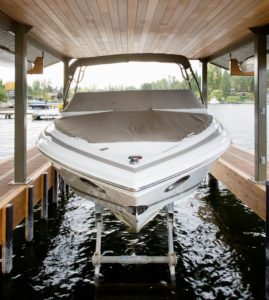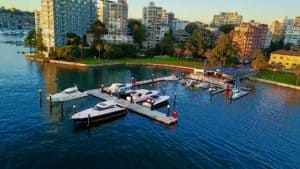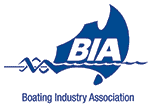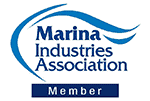Properly Securing Your Watercraft
No one can sail forever. Eventually, you have to come into port and get provisions, have your boat serviced, or possibly get fuel if you have a powered watercraft. And while larger vessels anchor offshore for some of these needs, most sailboats and yachts need to moor.
When you need to make berth, your greatest priority is tying off your boat so you can ensure it will not slip away while you are on land, and having the right dock line is the only way to do so properly. Regular rope bought at a hardware store won’t cut it. You need the proper dock line, and the knowledge of how to tie it correctly to your boat and to the dock cleat or bollard.
Selecting Your Dock Line
Proper dock lines are made of nylon and have some give to them, but not much. They allow for stretching, while providing more strength than standard cotton ropes. Waves cause shocks to the lines and the stress can damage them. Nylon weave dock lines absorb shocks more effectively than any other material.
There are three standard weaves for dock lines:
- Double braid
- Three-strand
- Mega braid
Double Braid
Double braided lines are the thinner ones you might see securing smaller craft to a dock. They are reasonably strong—as most braided items are—and stretch very little, compared to other lines like three-strand. And one fun feature, double braided lines can come in 6 colors. This allows the boat owner to pick a color that complements their vessel.
Three-Strand
Three-strand is by far the most affordable of the dock line options. It is 10% weaker than double braid on average, but has some stretch to it that is beneficial in a storm when the sea is roiling. It is prone to tangles, so when it is aboard your boat, it must be coiled. An interesting feature of three-strand if it is damaged and one strand is broken, the remaining two strands will pick up the slack.
Mega Braid
Mega braid is a monster line for large vessels. It is composed of 12 braided strands that are very rigid. You likely won’t see one of these on any boat shorter than 70-feet. They are difficult to splice without the right equipment, so they are often ordered pre-spliced, and they only come in two colors: white and black.
Dock line diameter is critical. The rule of thumb is your dock line should be an 1/8th of an inch for every nine feet of vessel. Most dock lines start at 3/8-inch and go up to 1-inch.
Tying Off
Yachters, experienced sailors, and charter boat owners who spend all of their time on the water are well versed in the ins and outs of proper dock line use, as well as dock line courtesy. They know that a docking line that is improperly secured can lead to their vessel sustaining damage as it bangs against the dock, especially during a storm.
New boaters or renters, however, have limited experience and minimal knowledge of the proper way to tie off their docking lines, and as many experienced mariners have seen, their boats are often found adrift off shore, or they collide with another boat in the dock area.
Tying off properly is a learned trait. Some people gain this knowledge over years of experience, some are trained by a friend or experienced mariner, but it is not something a person just knows how to do, and doing it correctly takes practice. How you tie off, which cleats or pylons you tie to on the dock, and how many, all make a difference.
Proper Dock Etiquette
Proper dock etiquette is similar to other forms of etiquette, and they all stem from a basic respect and common courtesy. When pulling into a dock area, right of way applies, so be mindful of the flow of boat traffic. Properly securing your boat ensures it doesn’t damage the dock or other boats is paramount to being a responsible owner.
When docking your boat, there are two types of lines you must secure if you plan to leave your boat for an extended period of time. Regular mooring lines are fine for short visits but storing your boat for the winter at your favorite slip requires additional effort. The types are transient lines and permanent lines.
Transient lines are the dock lines you keep with you on the boat and throw to a person on the dock to tie you off, or you secure your vessel with yourself. They are tied forward of the bow, and behind the stern, and both are important to keep the boat from rocking back and forth, weakening the lines or giving them slack.
Permanent lines are traditionally secured at the midsection of the boat to give balance and stability to the transient lines. The one big difference with permanent lines is the extra care they are given to protect from chafe. Chafe occurs when a rope is used too frequently, rubbing against hard surfaces. Permanent lines are coated in areas that rub frequently, keeping them undamaged.
Transient lines should be 2/3 the boats overall length, offering plenty of slack if the cleat or bollard you intend to secure it too is far away. Permanent lines are very specific in length, holding the boat as tightly as possible. Having both of these lines in use keeps your boat from floating haphazardly toward other boats moored in nearby slips.
Tips for Boating Enthusiasts
Some of us learn by reading, but most learn by visual cues and experience. If you are unsure how to properly tie off your craft to a dock cleat or bollard, do what is known as a “float by.” Take a long look at what others have done and mimic them. No one will fault you for following the lead of an experienced boater who knows how to moor properly.
It is wise to secure your boat to the cleat before it is completely in the slip. A weather hitch knot will work well in this case. This prevents your boat from going too far into the slip or accidentally floating away. Set the bow line first, then the stern, then the spring lines if you use them. It is best if done in this order.
Tide tables are your best friend when mooring. Know the tides before you lash up. If you tie off and the tide recedes, you can hang your boat and damage the dock, costing you your vessel and a lot of money in repairs. Get a tide table app and keep a weather eye on it. This is also true in stormy weather where the sea rises and falls with the waves.
One last tip. If you really love your boat, you want her in the best condition at all times. To ensure her hull isn’t banging against the dock, proper docking line procedures will work, but for added assurance, invest in some simple docking fenders. They will give your boat something soft to absorb impacts instead of hard pylons and dock boards.
Corleone Marinas – Here to Help
Corleone Marinas offers luxury and convenience at the most beautiful locations in Sydney including Elizabeth Bay, Balmain, Long Island and Drummoyne. Each location provides a full range of marina services including wet berths, moorings, and slipways with shipwrights and on-hand mechanics. Contact us today to learn more about or premium harbor locations.


